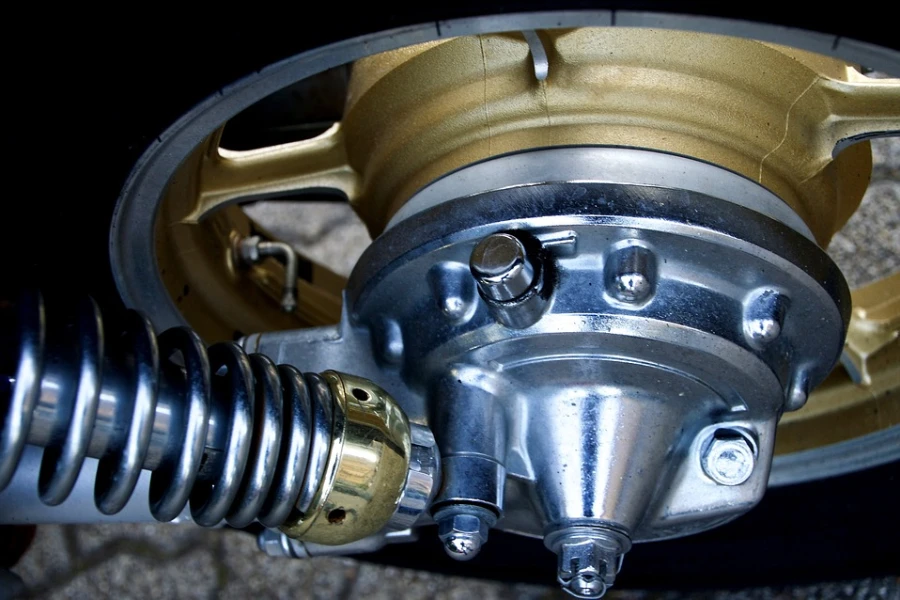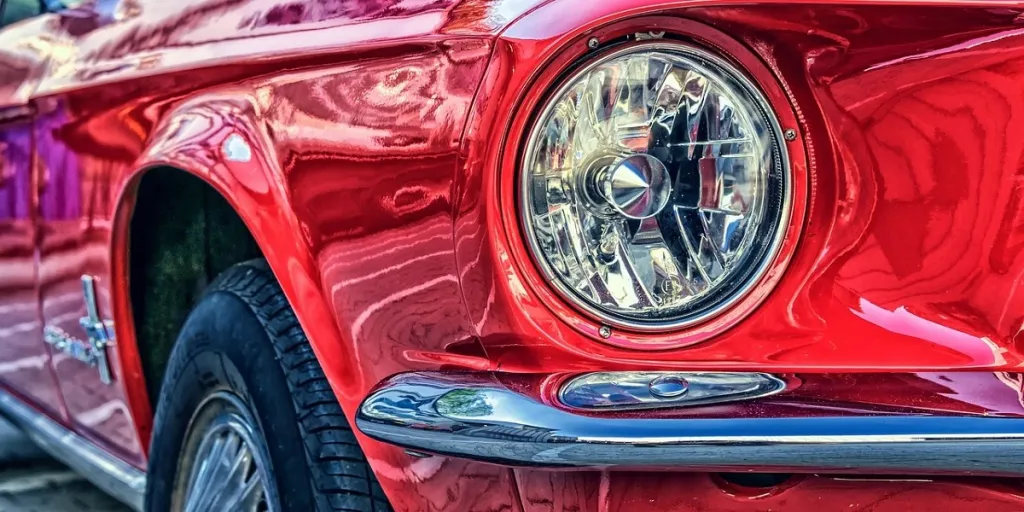Shock absorbers have received many upgrades that make them more durable while enhancing their traditional 50,000-mile lifespan. However, they’re not immune to wear and tear and will need eventual replacements.
But how do car owners recognize when to replace shocks or ensure their products are in a reliable condition? This article will discuss the perfect time for consumers to replace their car shock absorbers in 2023.
Table of Contents
The market size of car shock absorbers
How do worn shock absorbers feel when driving?
How to physically inspect car shock absorbers
When to replace worn shock absorbers
Five signs of a worn car shock absorber
Final words
The market size of car shock absorbers
In 2021, the global car shock absorber market registered a US$ 16.2 billion value. However, experts predict the industry will increase from 2022’s US$ 16.99 billion to US$ 23.75 billion by 2030. They also anticipate it’ll exhibit a 4.90% compound annual growth rate (CAGR) over the forecast period. In addition, the key drivers of this market’s growth include the growing automotive aftermarket and rising sales of automobiles.
According to the above report, the passenger car segment dominated the 2021 market, with experts predicting it will register the fastest CAGR from 2022 to 2030. But interestingly, the rising demand for vans and pickup trucks is the primary driver for the commercial vehicle categories in the global shock absorber industry.
Asia Pacific accounted for US$ 7.11 billion of the global car shock absorber market in 2021, and experts predict it will register a significant CAGR over the forecast period. In addition, the region enjoys such predictions because of the increasing rate of vehicles on the road, and rising demand for shock absorbers in the aftermarket.
How do worn shock absorbers feel when driving?
Shock absorbers are critical components preventing the upward and downward movement of vehicle springs. Automobiles without shocks will continuously bounce for an extended period or until the spring’s kinetic movement dissipates.
Unfortunately, most shock absorbers can degenerate over time without showing visual indications. As a result, it’s almost impossible to detect worn-out shocks on a whim. However, one essential thing retailers must understand is that shock absorbers gradually lose their weight transfer control as they wear out.
One may notice the automobile bouncing more often while braking, accelerating, or turning. More specifically, if the car’s front end dives when activating the brakes, the front shock absorbers are most likely worn out.
In addition, worn-out shocks can increase braking distances, raising safety concerns. But that’s not all that happens when driving with worn shock absorbers. Steering precision and overall stability will also drop significantly.
What’s more, worn shock absorbers may cause wheel hops on smooth roads, making the car bounce like a basketball without reason. Such situations indicate the component is completely worn out and provides zero resistance to the vehicle’s upward and downward force.
Lastly, vehicles with worn-out shock absorbers will experience weak compressions, resulting in hard, jarring rides over big and small road imperfections.
How to physically inspect car shock absorbers

Experiencing frequent suspicious symptoms from car shock absorbers? Try performing a physical examination. One sign to look out for is fluid or gas leakage. Usually, it indicates that the shock absorber is reaching the end of its useful lifespan.
Thankfully, leakage is an incredibly easy sign to spot. Retailers can inspect their components for heavy films of wet oil on the housing. The fluid will stick to dirt and grease, increasing the leakage’s visibility.
Spotting some moisture or misting on the shocks doesn’t necessarily indicate a problem that needs replacing. However, dents on the shock’s outer cover are a cause for alarm. Usually, dents result from debris, like rocks, hitting the component. Moreover, it’s an issue popular with unpaved roads.
Significant dent damage can block the hydraulic liquid flow between outer and inner tubes, especially on twin-tube shock absorbers. On the other hand, it can interrupt the piston valve’s smooth movements on mono-tube variants.
While that’s all retailers can inspect at a glance, they can go deeper by examining their component’s “eyeholes.” These round parts are the shock absorber’s mounting points, helping to attach it to the vehicle’s frame and the suspension control arm.
Inside these eyeholes are uniquely-shaped rubber bushings that firmly secure the shocks, prevent shifting, and cushion vibrations. Shock absorbers with damaged bushings won’t perform their jobs properly.
In addition, deteriorating bushings will permit metal-on-metal contact, generating rattling noises when vehicles run over bumps. But these sounds may also indicate loose mounting bolds that need more tightening.
Depending on the shock absorber’s design, retailers can only replace the bushings. However, some variants come with integrated bushings, meaning a defect would require replacing the entire shock.
When to replace worn shock absorbers
Many manufacturers recommend changing factory OE shock absorbers at 50,000 mileage. Although it’s not unheard of to have worn-out shocks at this point, modern cars can run up to 100,000 miles with their stock shocks.
Regardless, retailers can carry out regular inspections and tests to check the health of their shock absorbers. But a suitable time for replacing shock absorbers is when repairing unevenly worn tires, brakes with poor control response, suspension bushings, and springs.
Since the car would be on life for these repair processes, sellers can enjoy potential labor savings by also replacing the shocks at this time. In addition, another perfect time to replace worn shock absorbers is after they complete their 100,000 or 150,000 mileage milestone.
Five signs of a worn car shock absorber
Veering or sliding
What does it mean when the car veers or slides in side winds? Unless drivers are moving through a whirlwind, it could indicate their dealing with a worn-out shock absorber.
Leaking or worn shocks can cause overall vehicle unstableness when driving. In addition, it’s not normal to “correct” the car’s alignment, even in minor winds.
Uneven tire wears
Finding uneven tire wear during physical inspections is a big red flag. Worn shocks can’t keep a car’s tires firmly on the ground, leading to tire cupping.
As a result, uneven wear on tires indicates worn shocks. In addition, uneven tire wear increases hydroplaning risks, leaving the driver more susceptible to unplanned flats.
Rocking, rolling, and rattling
When driving a vehicle feels like a mini earthquake, it could point to worn-out shock absorbers. Since these components handle the vibration and impact of a vehicle’s suspension and springs, a faulty one won’t cushion the force, causing the car to shake, rock, or rattle a little too hard.
Rocky rides are more than just uncomfortable. They can place unwanted pressure on other car components, leading to more severe issues.
Swerving
Does the car swerve and dip when applying brakes? This could be another sign that the retailer is having shock absorber problems.
If halting the car’s movements causes a noticeable front-end dip or swerving, worn shocks may be the suspect. Also note that this sign is incredibly dangerous, especially when swerving occurs in wet weather conditions.
Excessive vibration
Excessive steering wheel vibration might indicate that the car’s shock absorbers are having problems. While traveling over bumpy road surfaces can cause the wheel to vibrate naturally, it should stop when the vehicle enters smooth surfaces.
But if it doesn’t stop, worn-out shock absorbers are probably at play. If not treated, excessive sterling wheel vibration can disturb the driver’s ability to control the car, especially at highway speeds.
Final words
Worn shocks are tough to spot because the component wears out over time, making it tricky to pinpoint when they need replacing. However, if retailers notice any of the symptoms covered in this article, they are advised to take immediate action.
Alternatively, sellers can change shock absorbers while performing other repair processes. So while there’s no perfect time for replacing car shock absorbers, doing physical inspections and other tests can indicate when vehicles need shock replacements.




